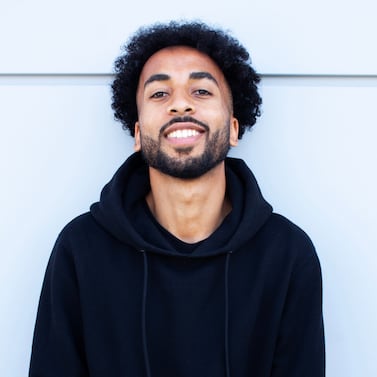
The Business of Fashion
Agenda-setting intelligence, analysis and advice for the global fashion community.

Agenda-setting intelligence, analysis and advice for the global fashion community.

LONDON — London’s emerging menswear labels were brutally tested by the pandemic, but as England throws off coronavirus restrictions and one of the world’s most global cities comes back to life, young brands with multicultural founders are shining bright.
On Saturday, British Nigerian-Indian designer Priya Ahluwalia’s return to the runway, with her label’s first show since its 2018 debut, was a standout, featuring silk tops, T-shirts and wide-leg jeans with printed images of Bollywood and Nollywood film posters.
Ahluwalia faced an existential reckoning during the pandemic as she struggled to source enough upcycled material to match demand. But her business has emerged resilient. After a punishing 2020, wholesale revenue was up 70 percent last year as the label added key US retailers Bergdorf Goodman, Nordstrom and Neiman Marcus to its list of stockists, which now tops 40 stores. Now, she’s targeting Japan and mainland China.
0 of 32
This season, the label also unveiled its first full womenswear collection alongside its menswear mainstays after piloting the category last season through a collaboration with Mulberry. Ahluwalia’s debut women’s assortment featured tailored pinstripe suits, loose-fitting tracksuits and party-ready pieces, interspersed with swirly panels of sharp orange, green and brown patchwork material.
ADVERTISEMENT
Later on Saturday, designer Foday Dumbuya of Labrum London received a standing ovation after stunning the audience into silence — and some tears — with an emotional presentation that captured both the joys and the hardship of the West African experience, styled and directed by Ibrahim Kamara.
“I wanted my collection to tell the story of migration,” said Dumbuya, whose Sierra Leonean background was evident in the palette of his collection, which included an eye-catching blend of Sierra Leonean fabrics with classic British tailoring. “All my fabrics are made by artisans in Freetown, Sierra Leone, then shipped to London where they are crafted into garments to be worn by models from all over the world.”
0 of 26
Throughout the pandemic, Labrum turned to partnerships like its 2021 collaboration with Converse to help drive revenue and visibility. Labrum was also commissioned by the National Sports Association of Sierra Leone to design the official uniforms and activewear for the country’s athletes at the postponed 2020 Olympic Games in Tokyo last year.
“Labrum has all the ingredients necessary for wider recognition and success in this industry,” said Machine-A founder Stavros Karelis. “Foday is one of fashion’s rising stars, for sure.”
Runway shows are a ritual for me and so important to people’s understanding of my brand’s appeal.
The day before, British Guyanese designer Saul Nash layered references to community and cultural identity into his latest collection. Nash — a trained dancer and choreographer — opened his show with a short film set in a Guyanese barbershop in northwest London (barbershop waiting rooms are crucial social hubs and safe spaces in Black communities worldwide), followed by a choreographed dance by his cast, all donning the new collection.
The four-year-old brand grew its wholesale footprint and now counts Selfridges, Browns and Ssense among its stockists. Sales were up 20 percent in 2021. For Nash, physical shows are a must. “Runway shows are a ritual for me and so important to people’s understanding of my brand’s appeal,” said the designer. Standout pieces included Guyana print jacquard knits, merino wool suit jackets, colourful tracksuits and loose-fitting hoodies.
0 of 18
“These brands have a very clear perspective on who they are, and the cultures they represent, but also how to beautifully convey these things through their collections,” said Karelis. “What London does best, and has always done best, is creating an infrastructure for young designers and emerging brands to develop.”
The London-based designer has won recognition for her vibrant designs patched together from vintage clothes. Now she wants to grow her business without sacrificing its core values.
Five days of London’s virtual fashion week proved that hard times really can bring out the best in the city’s sharpest designers, writes Tim Blanks.
This week, everyone will be talking about a packed schedule in Milan, Farfetch’s results and its ongoing talks with Richemont, plus the OECD’s annual forum on responsible supply chains.

Daniel-Yaw Miller is Senior Editorial Associate at The Business of Fashion. He is based in London and covers menswear, streetwear and sport.
From where aspirational customers are spending to Kering’s challenges and Richemont’s fashion revival, BoF’s editor-in-chief shares key takeaways from conversations with industry insiders in London, Milan and Paris.
BoF editor-at-large Tim Blanks and Imran Amed, BoF founder and editor-in-chief, look back at the key moments of fashion month, from Seán McGirr’s debut at Alexander McQueen to Chemena Kamali’s first collection for Chloé.
Anthony Vaccarello staged a surprise show to launch a collection of gorgeously languid men’s tailoring, writes Tim Blanks.
BoF’s editors pick the best shows of the Autumn/Winter 2024 season.